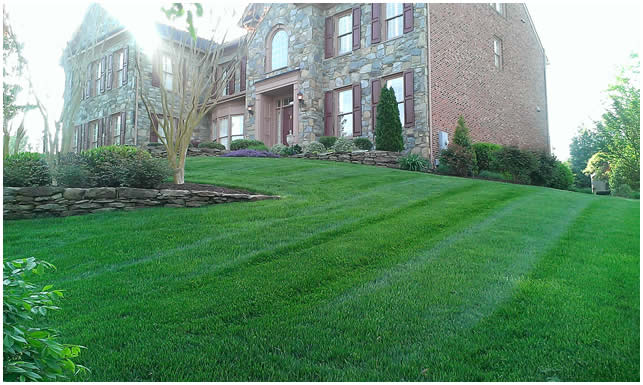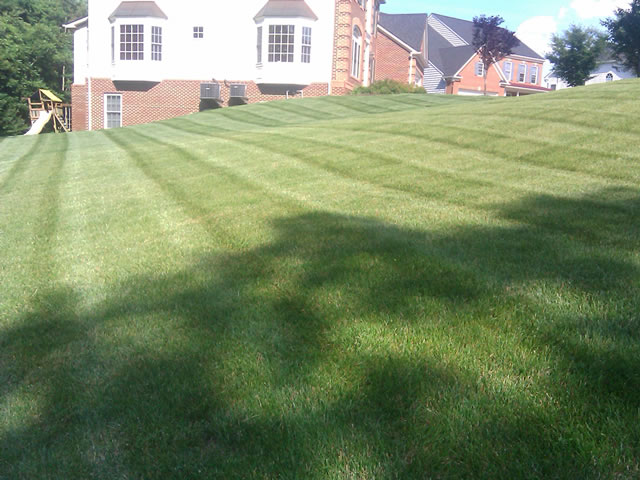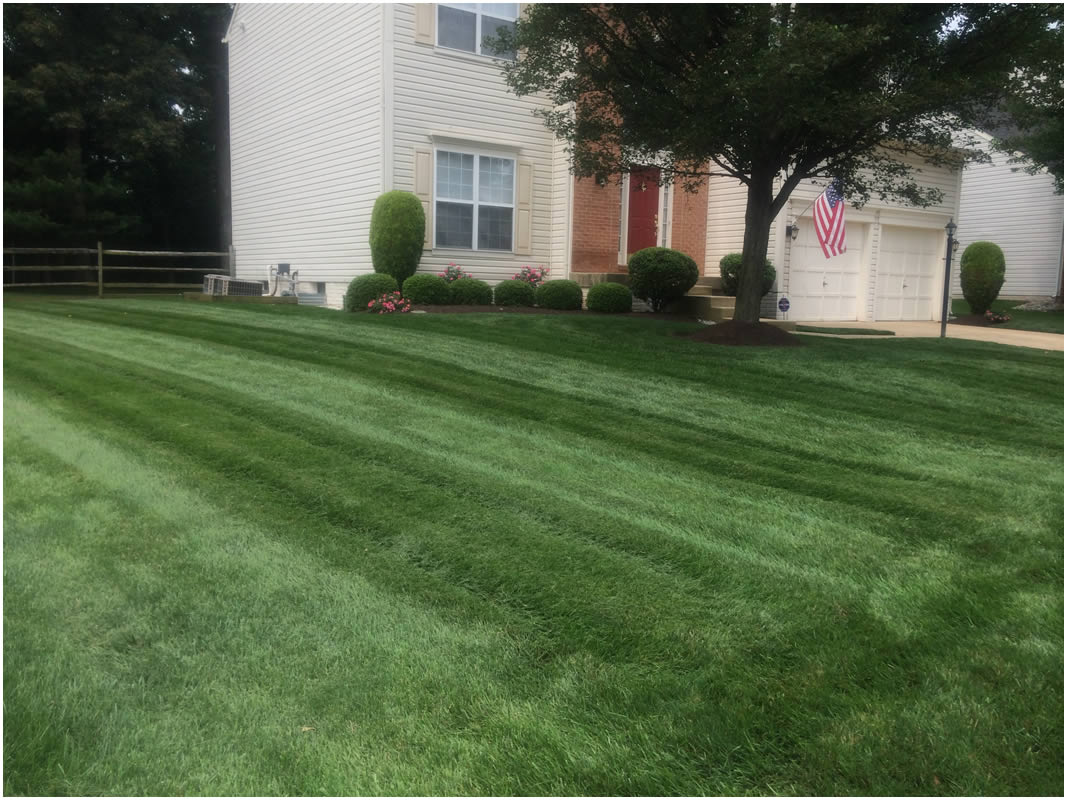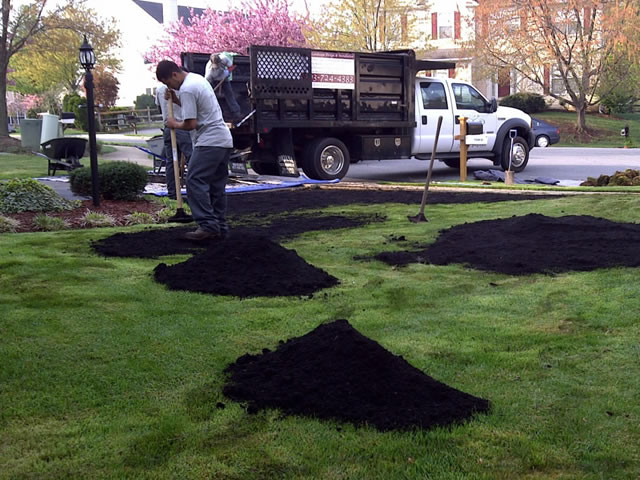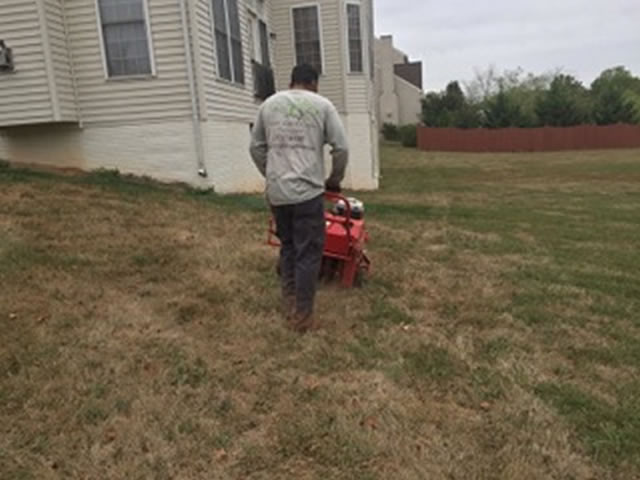Seasonal Lawn Mowing and Trimming
YLP provides seasonal Lawn mowing packages that include between 24-34 service visits per season April -November. Weekly mowing for irrigated lawns is the standard. Lawns with no irrigation where watering is less frequent are mowed weekly during the growing season of April through June, bi-monthly in July and August.
During September weekly cutting resumes through October then back to bi-monthly in November. At each service we professionally mow, trim, edge and blow off all hardscape areas to ensure we leave your home free of any clipping or trimming debris. Occasionally different lawns have special needs and we our ready to make adjustments as necessary.
We always mow with state of the art equipment, we diligintly care for our machinery ensuring each service is performed with the greatest result always giving the lawn a sharp cut and never using dull cutting blades. Grass develops new growth at the crown, so a proper lawn mowing stimulates the plant to become dense and healthy resulting in a rich, thick turf.
A good in-season height for most tall fescue turf grass which is what most lawns in our area consist of is 3 to 4 inches — typically the highest setting on mowers. The exception is toward the end of the season when it makes sense to cut a little shorter so the grass blades will dry faster over winter. That can help head off early-spring fungal problems such as snow mold.
Premium Turf Care
Lawns that receive regular feedings are greener, more weed-free, and healthier. Our customized early season applications will give your lawn a great head-start for the growing season. Our special mixture of weed-killing formula eliminates weeds more quickly and is environmentally friendly. Your Landscape Partner uses organic products wherever and whenever possible.
Please click here to view Your Landscape Partner’s Premium Turf Care Program
Since your lawn needs change over the course of a year, we have created a comprehensive program that provides just the care needed at each point. Call us today for more details: (703) 724-4383.
Lawn Repair Experts
Whether your lawn just needs bare patches seeded, weeds killed, fungus issues solved or a complete overhaul. We have developed tried and true methods with exceptional results.
Core Aeration
The heat and dryness of summer has caused a great deal of stress for the lawns in the area. With the cooler temperatures on the horizon, now is the perfect time to schedule your lawn aeration service. Aerating is the best way to improve air/gas exchange and water/nutrient intake. Due to soil compaction throughout the year, lawns rarely thrive without aeration. The benefits of aeration include reducing soil compaction, allowing more efficient watering and fertilizing, enhancing root growth, enriching surface soil, and decreasing water runoff.
Aeration is one of the best things we can do as preventative medicine for lawns. Aeration loosens the soil and allows air, water, and nutrients to reach your lawn roots. It is also the best way to help correct the problem of excessive thatch build-up. Additionally, aeration of the lawn improves drainage and the up-take of water by the grass and encourages deep root growth.
Overseeding
Did you know that overseeding your lawn will help to fill in sparse areas where the grass has died off?
Our professionals can top dress, aerate, and overseed your lawn resulting in a more lush and healthy landscape that will be the envy of your street.
Dethatching
Thatch is an interwoven layer of mostly dead roots, crowns, and stems. Thatch builds gradually beneath the grass surface and is located between the soil and the green lawn. Since thatch is not as visible as a pesky weed that keeps coming back it sometimes goes unnoticed and untreated. Dethatching or more commonly known as power raking is the process of removing the thatch buildup.
- Thatch can be very damaging for the following reasons.
- Prevents water and nutrients from reaching the plant roots.
- Absorbs pesticide/fungicide, preventing them from doing their job.
- Reduces space available for new grass. When crowded by thatch, new grass tends to grow rapidly as they seek light and space, thus producing long, thin leaves with shallow roots.
- Grass root systems can grow into the thatch rather than into the soil.
- Harbors diseases such as bipolarize leaf spot, summer patch, and dollar spot.
- Aggravates insect problems. Thatch favors insects by hiding them from their predators.
Lawn Composting
The process of spreading turf amendment organically enhanced soil across the entire surface of the lawn at 1/4″ thickness to:
- Encourage deeper rooting.
- Improve soil structure.
- Reduce soil compaction.
- Improve drought tolerance.
- Uniform texture & consistency.
- Increase water holding capacity.
- Increase air space in soil.
- Add organic matter.
- Add nutrients.
- Loosen heavy clay soils.
- Increase nutrient availability.
- Help reduce soil-born disease.
- Help reduce thatch.
- Increase soil microbial action.


